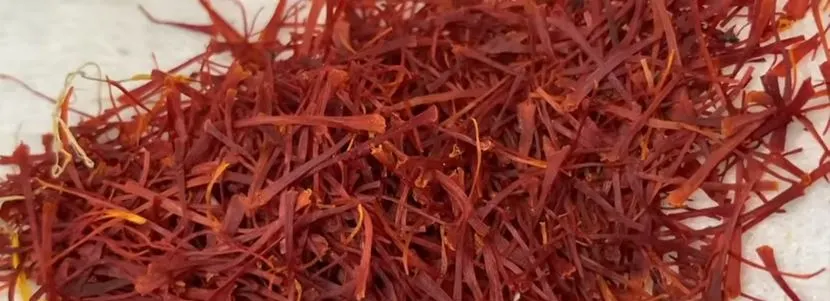Saffron Farming Profit Per Acre: Earn 26 lakh Yearly
Saffron, often dubbed the “red gold,” is one of the most valuable spices globally. Its unique flavor, color, and aroma make it a prized commodity in culinary, medicinal, and cosmetic industries. Saffron farming, while labor-intensive and requiring meticulous care, offers substantial financial rewards. This article provides an in-depth look at saffron farming per acre, covering the key aspects of cultivation, investment, yield, and profitability.
Saffron, known for its exquisite flavor, vibrant color, and aromatic properties, is one of the most expensive spices in the world. Originating from the stigmas of the Crocus sativus flower, saffron has been cherished for centuries for its culinary, medicinal, and cosmetic uses. Despite its labor-intensive cultivation process, saffron farming offers lucrative financial returns. This comprehensive guide delves into the intricacies of saffron farming per acre, exploring every aspect from initial investment to potential profitability.
The Basics of Saffron Farming| Saffron Farming Profit Per Acre
Understanding Saffron
Saffron is harvested from the delicate stigmas of the Crocus sativus flower. Each flower produces only three red stigmas, which are painstakingly handpicked and dried to create the saffron spice. The plant requires specific growing conditions, making site selection crucial for successful cultivation.
Importance of Saffron
Saffron’s high value is attributed to its labor-intensive harvesting process and its extensive applications. It is used in various cuisines for its unique flavor and color, in traditional medicine for its therapeutic properties, and in cosmetics for its beneficial effects on skin health.

Initial Investment and Setup Costs | saffron farming profit per acre
Land Preparation
Preparing the land for saffron cultivation involves several critical steps. First, the soil must be plowed and tilled to create raised beds, ensuring proper drainage. Conducting a soil test is essential to adjust pH levels and nutrient content, aiming for a pH between 6 and 8. This preparation phase can cost between $500 and $1,500 per acre.
Corms (Bulbs)
The quality of corms significantly impacts saffron yield. For one acre, approximately 50,000 to 60,000 corms are needed, costing between $4,000 and $8,000 depending on quality and source. Investing in high-quality corms is crucial for optimal yield and profitability.
Infrastructure
Basic infrastructure is essential for successful saffron farming. This includes setting up efficient irrigation systems, preferably drip irrigation, and storage facilities. Initial setup costs for infrastructure can range from $2,000 to $5,000. Proper irrigation ensures the corms receive adequate moisture without waterlogging, which can cause bulb rot.
Growing Conditions | Saffron Farming Profit Per Acre
Climate
Saffron thrives in a temperate climate with hot, dry summers and cold winters. These conditions are essential for the proper growth and development of the Crocus sativus plant. Regions with these climatic conditions, or the ability to mimic them, are ideal for saffron farming.
Soil
Well-drained sandy or loamy soil with good organic content is ideal for saffron cultivation. Proper soil management, including the addition of organic matter and regular aeration, promotes healthy corm growth. Ensuring the soil is neither too acidic nor too alkaline is crucial for the plant’s development.
Irrigation
Efficient irrigation is critical for saffron farming. The crop requires moderate watering during the growing season but should not be waterlogged. Drip irrigation helps maintain optimal moisture levels, preventing bulb rot and ensuring healthy plant growth.
Planting and Maintenance | Saffron Farming Profit Per Acre
Planting Time
Corms are typically planted in late summer to early fall. Proper spacing, usually 10-15 cm apart, ensures adequate growth and air circulation, reducing the risk of fungal infections and promoting healthy development.

Fertilization
Using organic fertilizers and compost enhances soil fertility and structure. Minimal chemical fertilizers may be used based on soil test recommendations. Proper fertilization supports robust corm growth and improves overall yield.
Weed Control
Regular weeding is essential to prevent competition for nutrients and water. Mulching can help suppress weeds and retain soil moisture, contributing to the healthy growth of saffron plants. Effective weed control practices are crucial for maintaining crop quality and yield.
Harvesting and Processing | Saffron Farming Profit Per Acre
Harvesting
Saffron flowers bloom in the fall, and harvesting occurs early in the morning when the flowers are fully open. The stigmas are carefully plucked by hand, requiring precision and attention to detail. Timely harvesting is crucial for maintaining the quality of the spice.
Drying
The harvested stigmas are dried under controlled conditions to retain their vibrant color, aroma, and flavor. This process is critical for ensuring high-quality saffron that commands premium prices in the market. Proper drying techniques preserve the essential properties of saffron.
Storage
Dried saffron should be stored in airtight containers in a cool, dark place to maintain its quality and potency. Proper storage conditions prevent degradation and ensure the spice retains its flavor and aroma for extended periods.
Yield and Profitability | Saffron Farming Profit Per Acre
Yield: The yield per acre varies based on growing conditions, corm quality, and farming practices. On average, an acre can produce 8 to 12 pounds of dried saffron. With optimal practices, yields can reach up to 15 pounds.
Market Price: Saffron prices fluctuate based on quality and market demand. High-quality saffron typically sells for ₹1,23,750 to ₹2,47,500 (₹1,500 to ₹3,000) per pound. Assuming an average yield of 10 pounds per acre and a market price of ₹1,65,000 (₹2,000) per pound, gross revenue can be around ₹16,50,000 (₹20,000) per acre.

Profit Calculation | saffron farming profit per acre
To calculate the profit per acre, we need to subtract the total expenses from the gross revenue:
- Initial Investment: ₹7,28,000 to ₹10,56,000 (one-time for corms, can last 3-5 years)
- Annual Costs: ₹2,46,000 to ₹3,24,000 (labor, fertilizers, and maintenance)
- Assuming an initial investment of ₹10,00,000 and annual costs of ₹3,50,000, the total expenses in the first year would be ₹12,50,000. From the second year onwards, without the cost of new corms, annual expenses would be around ₹3,00,000.
- In 1 Acre Farm we can produced 3.5 to 4.5 KG saffron assuming 4KG Saffron from 1 acre
- current market rate is for 1g is RS. 600 to Rs.700, will consider as RS. 650
- if our production is 4KG mean = 4000g*650 = Rs.26,00,000
- First Year Profit: ₹26,00,000 (revenue) – ₹3,50,000 (expenses) = ₹22,50,000
- Subsequent Years Profit: ₹26,50,000 (revenue) – ₹3,00,000 (expenses) = ₹23,50,000
Enhancing Profitability | Saffron Farming Profit Per Acre
Quality Control
Maintaining high quality through meticulous harvesting and processing practices ensures better market prices. High-quality saffron fetches premium prices, directly impacting profitability. Regular quality checks and adherence to best practices are essential.
Market Access
Establishing direct sales channels, such as online platforms and local markets, can improve profit margins by eliminating intermediaries. Direct sales allow farmers to capture a larger share of the market price, increasing overall profitability.
Value Addition
Creating value-added products, like saffron-infused oils or cosmetics, can open new revenue streams. Diversifying product offerings helps in maximizing returns and reaching a broader customer base. Value addition enhances the economic viability of saffron farming.

0Diversification
Integrating other high-value crops or agritourism activities can provide additional income and reduce financial risks. Diversification helps stabilize income and offers multiple revenue streams, making the farming venture more resilient to market fluctuations.
Conclusion | saffron farming profit per acre
Saffron farming per acre presents a high-reward opportunity for those willing to invest in quality corms, efficient farming practices, and meticulous harvesting techniques. With proper planning and management, farmers can achieve substantial profits, making saffron cultivation an attractive agricultural venture. By focusing on quality, optimizing growing conditions, and strategically accessing markets, saffron farming can be a sustainable and profitable endeavor.
FAQs | saffron farming profit per acre
- How long does it take for saffron corms to produce flowers?
Saffron corms typically produce flowers in their first year after planting, with peak yields occurring in the second and third years.
- What are the ideal climatic conditions for saffron farming?
Saffron thrives in temperate climates with hot, dry summers and cold winters, making these conditions essential for optimal growth and yield.
- How can I ensure the quality of my saffron crop?
Ensuring quality involves meticulous harvesting, proper drying techniques, and adequate storage conditions. Regular quality checks and adherence to best practices are also crucial.
- Is saffron farming labor-intensive?
Yes, saffron farming is labor-intensive, particularly during the harvesting and processing stages, where precision and attention to detail are required.
- What are the main costs involved in saffron farming per acre?
Main costs include land preparation, corms, infrastructure, labor, and maintenance
You Can read this too